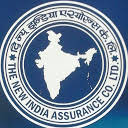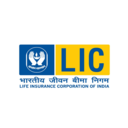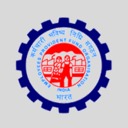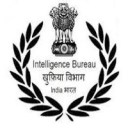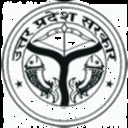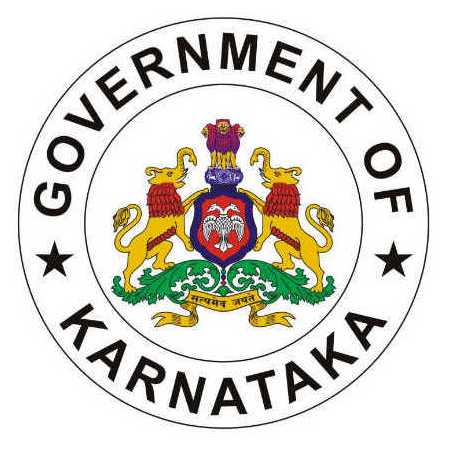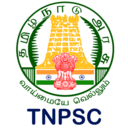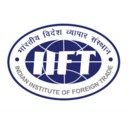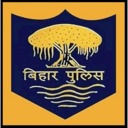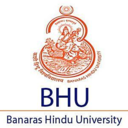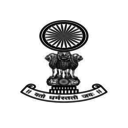The Staff Selection Commission (SSC) conducts the CHSL (Combined Higher Secondary Level) Exam annually to recruit candidates for posts like Lower Division Clerk (LDC), Junior Secretariat Assistant (JSA), and Data Entry Operator (DEO) in various ministries and departments. To ace the exam, understanding the SSC CHSL Syllabus 2025 and exam pattern is critical. In this article, we've provided a detailed Tier 1 and Tier 2 subject-wise syllabus, updated exam pattern, marking scheme, and a free SSC CHSL Syllabus 2025 PDF download to streamline your preparation.
What is SSC CHSL Syllabus?
The SSC CHSL 2025 syllabus is officially released along with the SSC CHSL Notification 2025. The syllabus includes several subjects that The SSC CHSL Syllabus includes topics from Reasoning, Quantitative Aptitude, General Awareness, English Language, and Computer Knowledge. Both Tier 1 and Tier 2 exams test similar subjects, with Tier 2 being more advanced and also including a computer proficiency module.
SSC CHSL Syllabus 2025 Overview
The SSC CHSL 2025 examination will be conducted in two tiers. Both the SSC CHSL Tier 1 and Tier 2 exams will be conducted online. The detailed overview of the SSC CHSL Syllabus 2025 is as follows:
| Particulars | Details |
|---|
| Exam Name | SSC Combined Higher Secondary Level (CHSL) 2025 |
| Conducting Body | Staff Selection Commission (SSC) |
| Exam Mode | Computer-Based Test (CBT) – Online |
| Tiers | Tier 1 and Tier 2 |
| Marking Scheme | Tier 1: +2/-0.5 |
| Official Website | ssc.gov.in |
Attempt A Free SSC CHSL Typing Test
SSC CHSL Tier 1 Syllabus
The SSC CHSL Tier 1 Syllabus includes sections such as Reasoning, Mathematics, General Awareness, and English. The detailed syllabus for SSC CHSL Tier 1 is as follows:
SSC CHSL Reasoning Syllabus
The SSC CHSL Reasoning Syllabus is as follows:
| Category | Topics Covered |
|---|
| Verbal Reasoning | Semantic Analogy, Semantic Classification, Semantic Series, Word Building, Drawing Inferences, Problem Solving, Coding-Decoding, Number Series, Numerical Operations |
| Non-Verbal Reasoning | Figural Analogy, Figural Classification, Figural Series, Embedded Figures, Pattern Folding & Unfolding, Figural Pattern Folding & Completion |
| Mixed/Other Topics | Symbolic Operations, Symbolic/Number Analogy, Symbolic/Number Classification, Trends, Venn Diagrams, Space Orientation |
| Advanced Topics | Critical Thinking, Emotional Intelligence, Social Intelligence, Other relevant sub-topics as per exam updates |
SSC CHSL Maths Syllabus
The SSC CHSL Maths Syllabus is as follows:
| Topic | Subtopics |
|---|
| Number Systems | Computation of whole numbers, decimals, fractions, and the relationship between numbers |
| Fundamental Arithmetical Operations | Percentages, Ratio and Proportion, Square roots, Averages, Simple and Compound Interest, Profit and Loss, Discount, Partnership Business, Mixture and Alligation, Time and Distance, Time and Work |
| Algebra | Basic algebraic identities from school-level algebra, elementary surds (simple problems), graphs of linear equations |
| Geometry | Basics of geometric figures, triangle and its various centres, congruence and similarity of triangles, circle and its chords, tangents, angles, common tangents |
| Mensuration | Areas and volumes of: Triangle, Quadrilaterals, Regular Polygons, Circle, Right Prism, Right Circular Cone, Right Circular Cylinder, Sphere, Hemisphere, Rectangular Parallelepiped, Regular Right Pyramid (triangular/square base) |
| Trigonometry | Trigonometric ratios, Complementary angles, Heights and distances (simple problems), Standard identities like sin²θ + cos²θ = 1 |
| Statistical Charts | Tables and graphs – Histogram, Frequency polygon, Bar diagram, Pie chart |
Take FREE SSC CHSL Mock Test
SSC CHSL GA Syllabus
The SSC CHSL General Awareness syllabus is as follows:
| Subject | Topics |
| General Awareness | 1. Environment and its Societal Applications
2. Current Events
3. Everyday Observations
4. Scientific Aspects
5. India and Neighboring Countries |
| History | 1. Indus Valley and Civilization
2. Buddhism and Jainism in India
3. The Magadha Empire
4. Gupta Dynasty
5. Delhi Sultanate and Mughal Empire
6. India and its Independence |
| Geography | 1. The Universe and the Solar System
2. Earth
3. Mountains and Rivers
4. Hydrosphere, Lithosphere, Atmosphere
5. Wind Cyclone6. Climate
7. Geological Survey of India
8. Indian Climate, Natural Vegetation and Soil |
| Economics | 1. General Economics
2. Economic Planning
3. National Income of India
4. Budget
5. Market
6. Demand and Supply
7. Economic Concepts
8. Population of India, Mortality Rate, Unemployment |
| Polity | 1. Constitutional Development of India
2. State, Union Territory
3. Fundamental Rights
4. Directive Principles of State Policy
5. Executive, Legislation, Judiciary
6. Constitution of India |
| Science | Basic Topics of Chemistry, Physics, and Biology |
SSC CHSL English Syllabus
The SSC CHSL English Syllabus is as follows:
| Topic | Description |
|---|
| Spot the Error | Identify grammatical errors in a sentence |
| Fill in the Blanks | Choose the correct word to complete a sentence |
| Synonyms / Homonyms | Words with similar meanings or same spelling but different meanings |
| Antonyms | Words with opposite meanings |
| Spelling / Detecting Mis-spelt Words | Identify correct or incorrect spellings |
| Idioms & Phrases | Common expressions and their meanings |
| One Word Substitution | Replacing a phrase with a single word |
| Improvement of Sentences | Correcting and improving sentence structure or grammar |
| Active / Passive Voice | Converting sentences between active and passive forms |
| Direct / Indirect Speech | Changing between direct and reported speech |
| Shuffling of Sentence Parts | Re-arranging parts of a sentence to make it meaningful |
| Shuffling of Sentences in a Passage | Re-arranging sentences to form a coherent paragraph |
| Cloze Test | Filling in blanks within a passage to test contextual understanding |
| Comprehension Passage | Reading and answering questions based on a passage |
SSC CHSL Tier 2 Syllabus
The subjects covered in SSC CHSL Tier 2 are similar to Tier 1, but the questions will be comparatively difficult. Additionally, Tier 2 includes a new subject, Computer Knowledge, along with a Skill Test.
SSC CHSL Mathematical Abilities Syllabus
The SSC CHSL Tier 2 Mathematical Abilities syllabus focuses on assessing candidates' proficiency in solving mathematical problems, including arithmetic, algebra, geometry, trigonometry, and statistical concepts.
| Units | Topics (English) |
| Number Systems | Computation of Whole Numbers
Decimals and Fractions
Relationship between numbers |
| Fundamental Arithmetical Operations | Percentages
Ratio and Proportion
Square roots
Averages
Interest (Simple and Compound)
Profit and Loss
Discount
Partnership Business
Mixture and Alligation
Time and Distance
Time and Work |
| Algebra | Basic algebraic identities of School Algebra and Elementary surds (simple problems) and Graphs of Linear Equations |
| Geometry | Familiarity with elementary geometric figures and facts: Triangle and its various kinds of centers
Congruence and similarity of triangles
Circle and its chords
Tangents
Angles subtended by chords of a circle
Common tangents to two or more circles |
| Mensuration | Triangle
Quadrilaterals
Regular Polygons
Circle
Right Prism
Right Circular Cone
Right Circular Cylinder
Sphere
Hemispheres
Rectangular Parallelepiped
Regular Right Pyramid with triangular or square Base |
| Trigonometry | Trigonometry
Trigonometric ratios
Complementary angles
Height and distances (simple problems only)
Standard Identities like sin²θ + cos²θ = 1 |
| Statistics and Probability | Use of Tables and Graphs
Histogram
Frequency polygon
Bar-diagram
Pie-chart
Measures of central tendency: mean, median, mode, standard deviation; calculation of simple probabilities |
Explore All SSC CHSL Hindi Medium Courses
SSC CHSL Reasoning and General Intelligence Syllabus
Module II of Section I, covering Reasoning and General Intelligence, includes questions on verbal and non-verbal reasoning, emotional intelligence, analogy, classification, and logical and analytical reasoning. This section assesses candidates' mental ability to make decisions and solve problems effectively.
| Topics | Description (English) |
| Semantic Analogy | Recognizing relationships between words based on their meanings. |
| Symbolic Operations | Manipulating symbols according to specified rules or patterns. |
| Symbolic/ Number Analogy | Identifying relationships between symbols or numbers. |
| Trends | Identifying patterns or trends in a sequence of data or figures. |
| Figural Analogy | Recognizing similarities between figures. |
| Space Orientation | Understanding spatial relationships and orientation. |
| Semantic Classification | Grouping words based on their meanings or categories. |
| Venn Diagrams | Solving problems based on logical relationships between different sets. |
| Symbolic/ Number Classification | Categorizing symbols or numbers based on common properties. |
| Drawing Inferences | Making logical deductions or conclusions from given information. |
| Figural Classification | Categorizing shapes or figures based on common characteristics. |
| Punched Hole/ Pattern-folding & Unfolding | Visualizing how a pattern might look when folded or unfolded. |
| Semantic Series | Completing a series of words in logical sequence based on their meaning. |
| Figural Pattern-folding and Completion | Recognizing patterns and completing figures. |
| Number Series | Determining the next number in a sequence following a specific rule. |
| Embedded Figures | Identifying a simple figure hidden within a complex figure. |
| Figural Series | Identifying the next figure in a sequence. |
| Critical Thinking | Evaluating arguments and drawing conclusions. |
| Problem Solving | Finding solutions to complex problems through logical reasoning. |
| Emotional Intelligence | Understanding and managing emotions effectively. |
| Word Building | Creating words from a given set of letters. |
| Social Intelligence | Understanding and managing interpersonal relationships. |
| Coding and Decoding | Deciphering codes or creating codes based on specific rules. |
| Numerical Operations | Performing operations on numbers following specific rules or patterns. |
SSC CHSL English Language and Comprehension Syllabus
Candidates will be tested on their ability to understand written material. They will be given two or more paragraphs to read, which could be from a book or a story, and also from a current affairs editorial or report. After reading, questions will be asked based on what they've read.
| Sub-Topics | Details |
| Language Proficiency | Vocabulary,
Grammar,
Sentence structure,
Correct usage of synonyms, Antonyms |
| Error Detection | Spot the Error,
Fill in the Blanks,
Synonyms/Homonyms,
Antonyms,
Spellings/Detecting misspelled words,
Idioms & Phrases,
One-word substitution,
Improvement of Sentences |
| Voice and Narration | Active/Passive Voice of Verbs,
Conversion into Direct/Indirect narration |
| Sentence Structure | Shuffling of Sentence parts,
Shuffling of Sentences in a passage,
Cloze Passage |
| Comprehension | Comprehension Passage with questions based on given paragraphs, including one paragraph from a book or story and another from a current affairs editorial or a report. |
SSC CHSL General Awareness Syllabus
The questions are made to check the candidates' awareness of their surroundings and how they relate to society. They also test knowledge of current events and general topics based on daily life and scientific aspects, as expected from an educated person.
| Topic | Details |
|---|
| Environment | Understanding of ecological issues, conservation, and sustainability. |
| Society | Knowledge of societal structures, norms, and values. |
| Current Events | Awareness of significant global, national, and local events. |
| Scientific Aspect | Understanding of scientific principles and their application in daily life. |
| History | Understanding of significant historical events and figures in India and neighboring nations.
1. Indus Valley and Civilization
2. Buddhism and Jainism In India
3. The Magadha Empire
4. Gupta Dynasty
5. Delhi Sultanate and Mughal Empire
6. India and its Independence |
| Culture | Knowledge of cultural heritage, traditions, and diversity in India and neighboring countries. |
| Geography | Familiarity with geographical features, landmarks, and physical characteristics of the region.
1. The Universe and the Solar System
2. Earth
3. Mountains and Rivers
4. Hydrosphere, Lithosphere, Atmosphere
5. Wind Cyclone
6. Climate
7. Geological Survey Of India
8. Indian Climate, Natural Vegetation And Soil |
| Economic Scene | Awareness of economic policies, trends, and developments impacting India and neighboring nations.
1. General Economics
2. Economic Planning
3. National Income Of India
4. Budget
5. Market
6. Demand and Supply
7. Economic Concept
8. Population of India, Mortery Rate, Unemployment |
| General Policy | Understanding of governmental policies, laws, and regulations governing India and its neighbors.
1. Constitutional Development of India
2. State, Union Territory
3. Fundamental Rights
4. Directive Principles of State Policy
5. Executive, Legislation, Judiciary
6. Constitution of India |
| Scientific Research | Knowledge of ongoing scientific research and advancements in various fields, both nationally and internationally. |
| Physics | 1. Units and Measurement
2. Waves and Motion
3. Light
4. Work and Energy
5. Heat and Temperature |
| Chemistry | 1. Chemical Symbol and Formulae
2. Atomic Structure
3. Periodic Classification
4. Chemical Bonding
5. Oxidation and Reduction
6. Acid, Bases and Salts
7. Carbon and its Compounds
8. Fuels
9. Metals and Non-Metals
10. Man-Made Substances |
| Biology | 1. Living and Non-Living
2. Cell and Its Structure
3. Genetics
4. Organic Evolution
5. Plant Morphology
6. Plant Diseases
7. Nitrogen Cycle
8. Animal Kingdom
9. Animal Tissue
10. Human Diseases |
Explore SSC CHSL English Medium Online Courses
SSC CHSL Computer Proficiency Syllabus
Module I of Section III, which is the Computer Knowledge Test, is compulsory for all candidates. However, it is considered a qualifying test, meaning candidates must attempt it, but the actual marks obtained in this module do not affect the final result.
| Topic | Details |
| Computer Basics | Organization of a Computer
Central Processing Unit (CPU)
Input/Output Devices
Computer Memory
Memory Organization
Back-up Devices
PORTs
Windows Explorer
Keyboard Shortcuts |
| Software | Windows Operating System including basics of Microsoft Office like MS Word, MS Excel, PowerPoint, etc. |
| Working with the Internet and e-mails | Web Browsing & Searching
Downloading & Uploading
Managing an E-mail Account
e-Banking |
| Basics of Networking and Cyber Security | Networking Devices and Protocols
Network and Information Security Threats (like hacking, viruses, worms, Trojans, etc.)
Preventive Measures |
How to Prepare for SSC CHSL 2025?
SSC CHSL Preparation Tips requires a smart and well-structured strategy, especially with the growing competition each year. Whether you're a first-time aspirant or a repeat candidate, having a clear understanding of the syllabus, exam pattern, and time management techniques is essential to crack the exam with a good score. Below are some effective preparation tips to help you stay ahead in your SSC CHSL journey.
- Understand the Syllabus & Pattern thoroughly before beginning.
- Follow a daily study plan for each subject.
- Practice from SSC CHSL previous year papers.
- Attempt mock tests regularly to build speed & accuracy.
- Join SSC CHSL Online Coaching for expert guidance.
- Regular revision and doubt-solving sessions are crucial.
SSC CHSL Syllabus 2025 PDF Free Download
The SSC CHSL 2025 Syllabus PDF in English is available for free download to help candidates in their exam preparation. It includes details on the SSC CHSL Exam Pattern, question types, and marks distribution, helping candidates focus on important topics and plan their studies well. Following the official syllabus helps candidates prioritize key areas, manage time better, and cover all essential sections for effective preparation.
Download SSC CHSL Syllabus PDF





